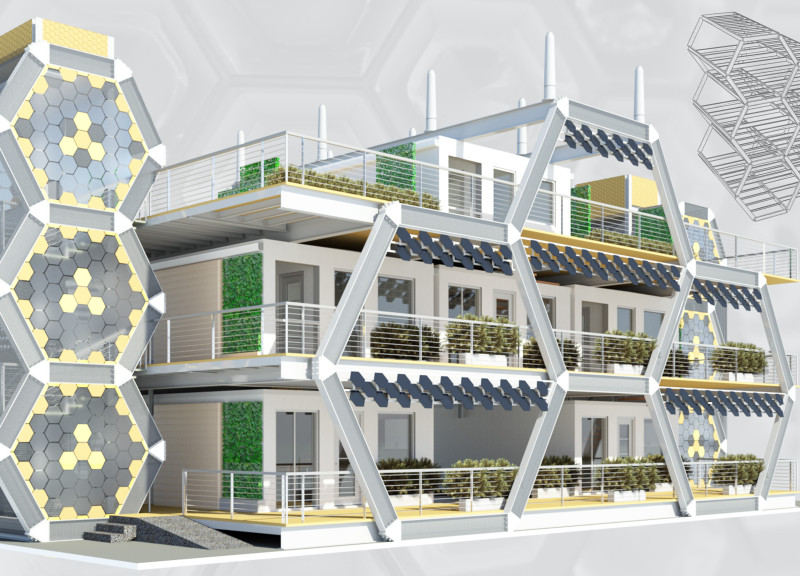5 key facts about this project
"The Hive" is a residential design situated in the urban landscape of London. It draws inspiration from the structure of a honeycomb, focusing on modularity and adaptability to enhance city living. The concept aims to balance functionality and sustainability, creating spaces that cater to the needs of residents while addressing modern urban challenges.
Structural Efficiency
One of the key features is the use of a honeycomb layout, which brings together repeated identical unit cells. This configuration allows for efficient construction and ensures the structure remains lightweight. The self-supporting design means that materials are used optimally, which helps keep costs down and maintains the integrity of the buildings.
Modular Living Units
The design includes well-planned living units, featuring both one-bedroom and three-bedroom apartments. Each unit is arranged thoughtfully to maximize usable space while considering privacy and communal areas. This careful organization fosters a sense of comfort and utility for residents, making daily living more convenient.
Sustainable Practices
Sustainability is a central theme, and the design complies with modern energy efficiency guidelines. Features include adherence to energy analysis benchmarks such as ASHRAE 90.1, illustrating a dedication to environmentally friendly practices. The integration of energy-efficient systems encourages responsible living, which is increasingly important in today's world.
Material Selection
In terms of materials, the project includes a variety of components that enhance its structural and energy performance. Steel cable and flat steel bar provide strength, while cement board serves as a durable surface. Polyurethane foam insulation improves energy efficiency, and recycled composite plastic is used to support sustainability efforts. Aluminous clips ensure easy assembly, maintaining the overall structure's integrity.
The facade is designed with a geometric pattern that reflects the honeycomb structure, promoting natural light and providing a visual connection to the urban surroundings. This detail not only adds to the aesthetic quality of the design but also enhances the overall living experience.



























